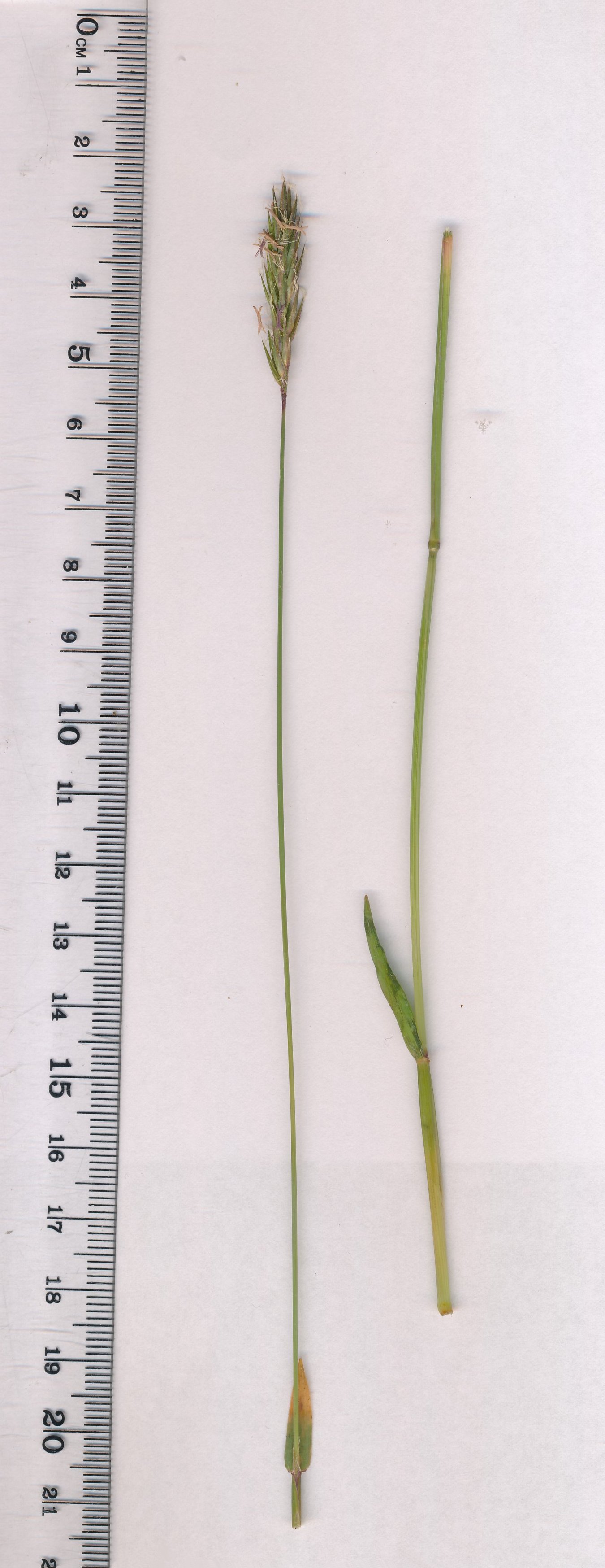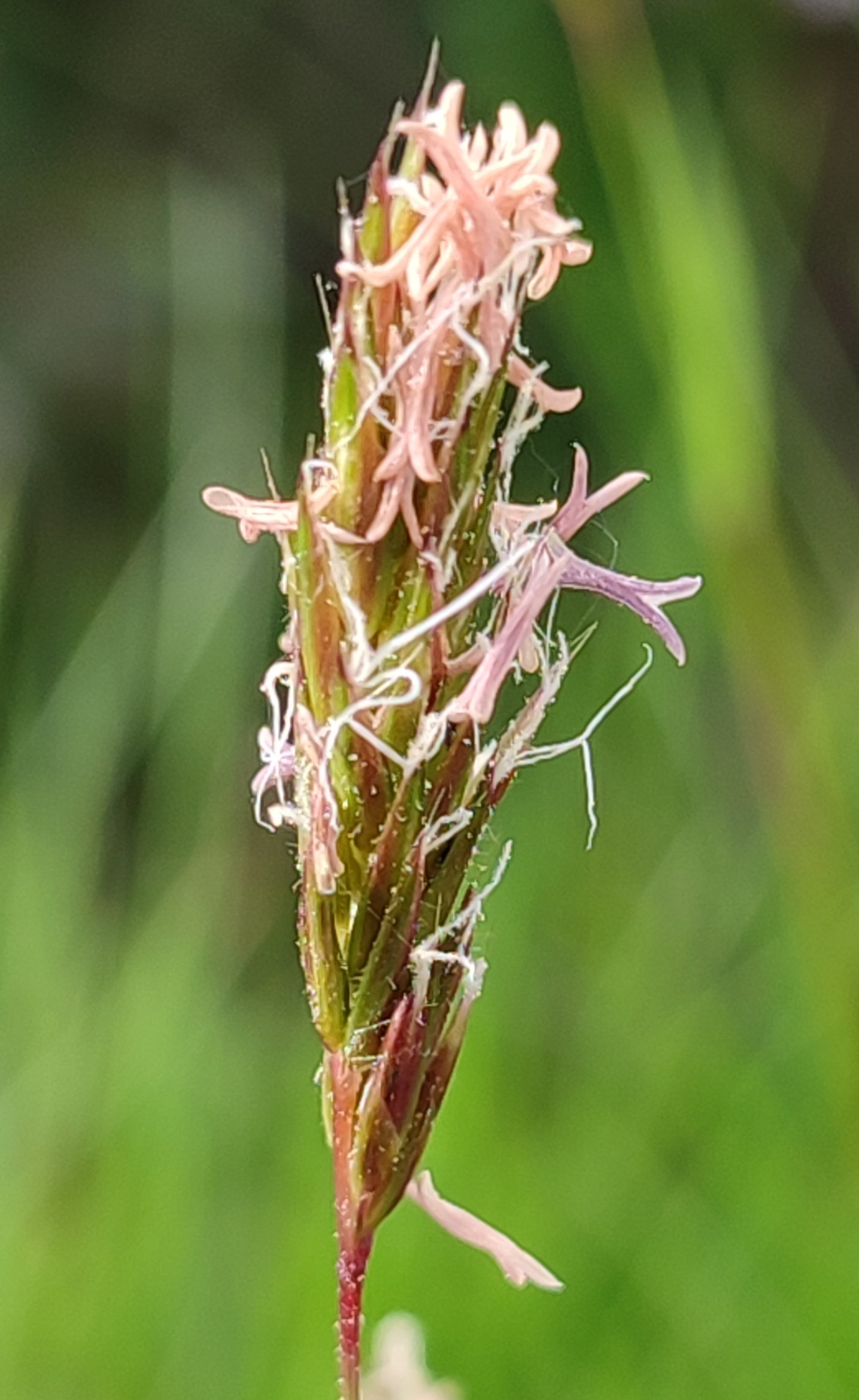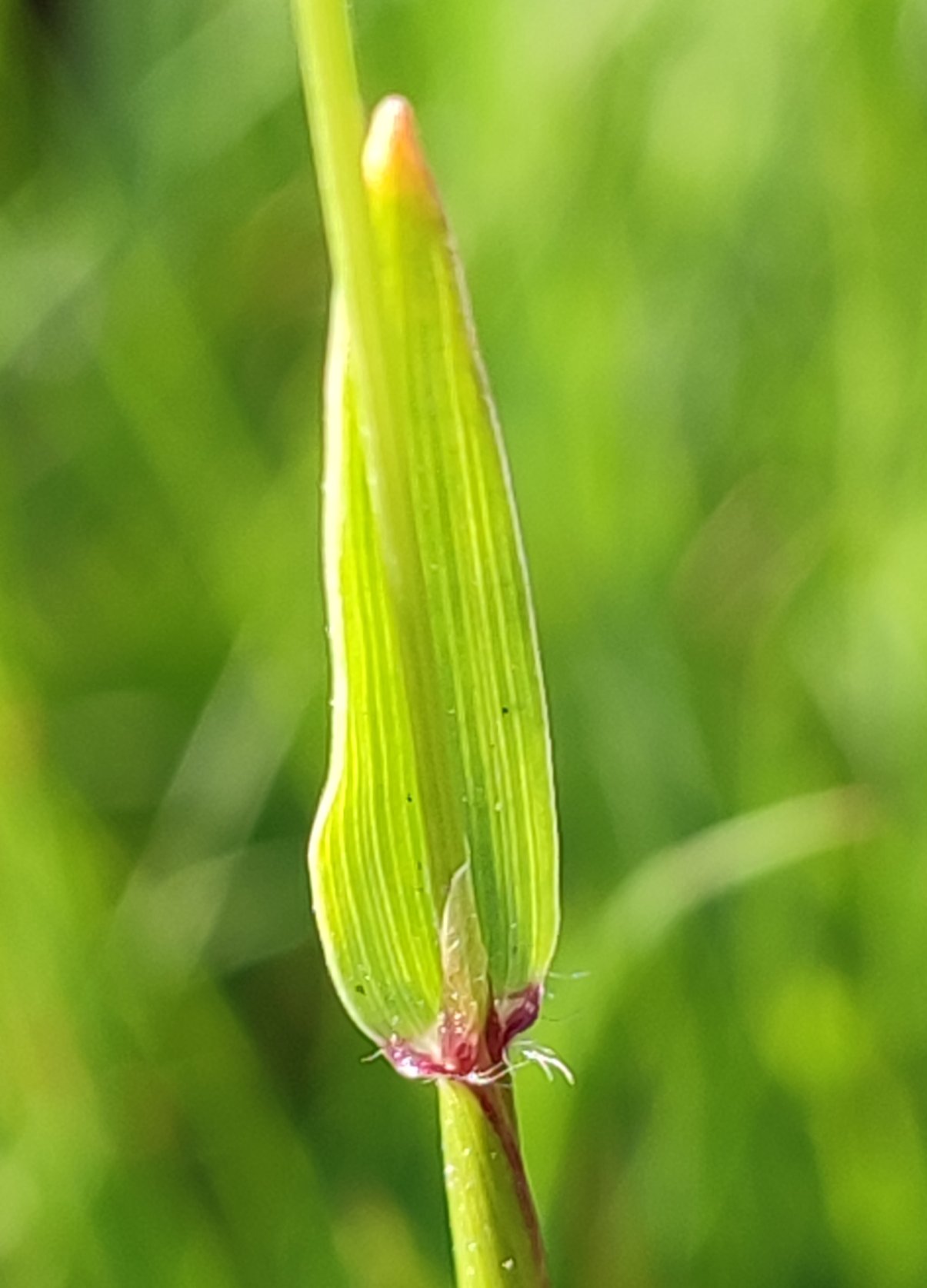Anthoxanthum odoratum L. Flouve odorante.
Très commun.
Localisation.
Habitats : Bois, prés.
Fleurs verdâtres ou jaunâtres.
Taille : de 0,2 à 0,5 mètre.
Fleurit du mois de mai à juillet.
Plante vivace ou annuelle.

Anthoxanthum odoratum L.

Anthoxanthum odoratum L.

Anthoxanthum odoratum L.

Anthoxanthum odoratum L.

Anthoxanthum odoratum L.
Anthoxanthum odoratum L. Flouve odorante. Plante vivace de 10-80 cm, glabre ou velue, odorante, à souche fibreuse gazonnante ; tige simple, dressée ou genouillée-ascendante ; feuilles larges de 3-5 mm ciliées au sommet de la gaine ; ligule oblongue, souvent déchirée ; panicule spiciforme oblongue-cylindracée, peu dense, atténuée au sommet ; glumes glabres ou velues ; glumelles stériles très velues, dépassant d'un quart la fleur fertile, l'inférieure munie sur le dos d'une arête droite et courte, la supérieure portant près de la base une arête genouillée dépassant peu (1 mm) le sommet de l'épillet.
NOMS VULGAIRES. - En français : Flouve, Chiendent-odorant, Foin-dur. En anglais : Spring-grass, Sweet-Vernal-grass. En allemand : Geruchgras, Riechgras, Wohlriechendes-Gras, Frühlingsgras. En flamand : Reukgras, Ruikend-Vorjaarsgras, Welriekend-gras. En italien: Paleo, Paleino-odorato.
USAGES ET PROPRIÉTÉES. -La Flouve est une plante fourragère intéressante par sa précocité et à cause de l'odeur agréable qu'elle communique au foin. - La plante renferme de la coumarine.